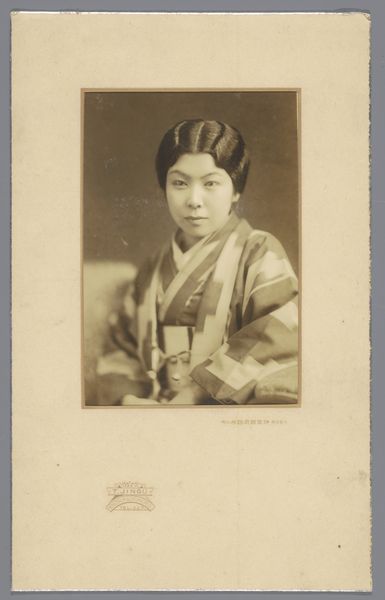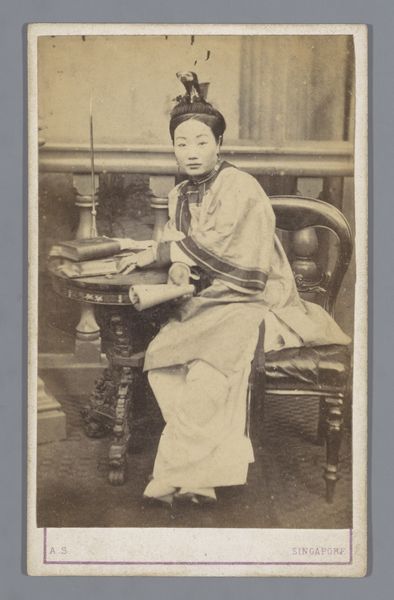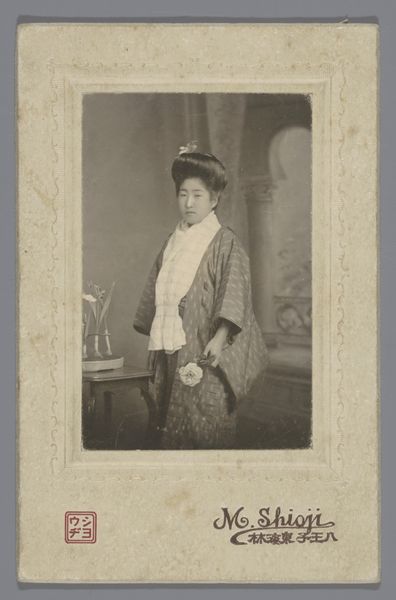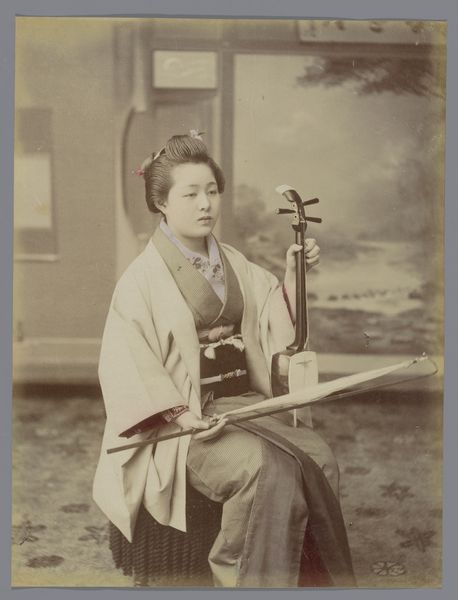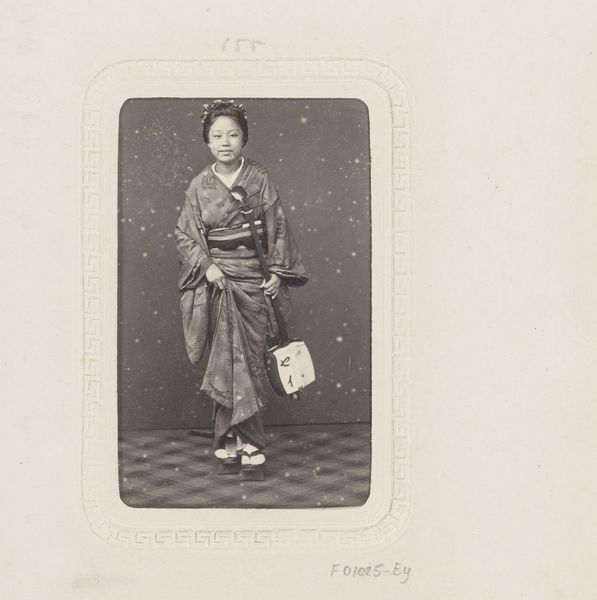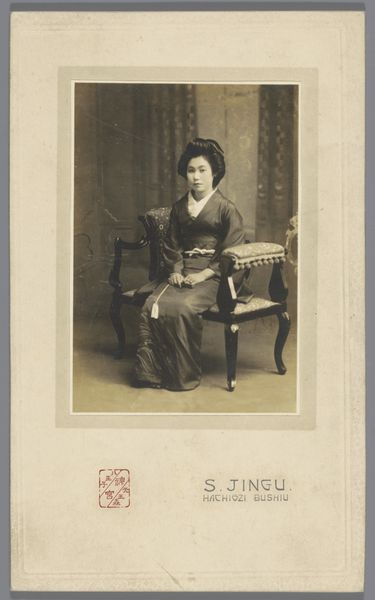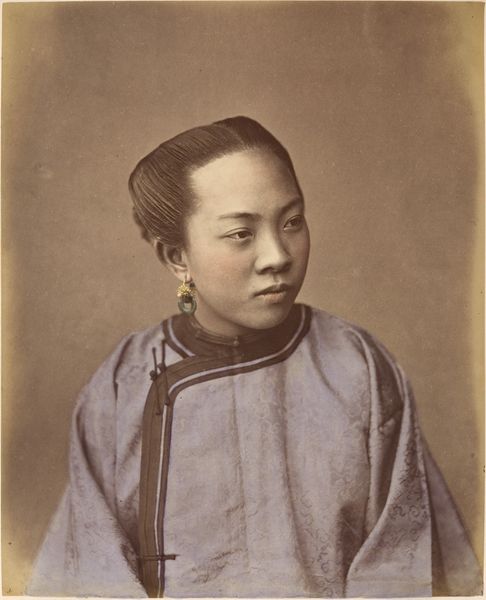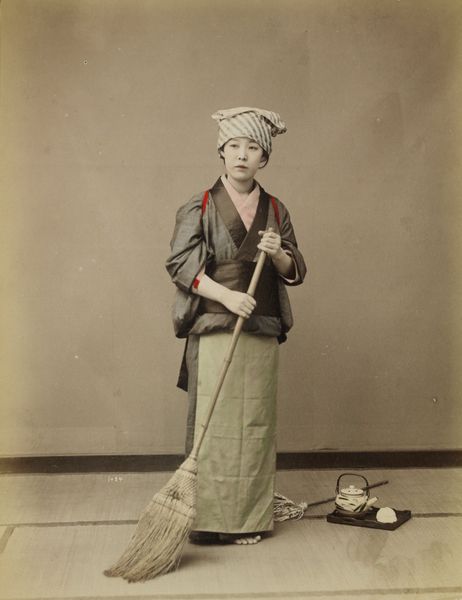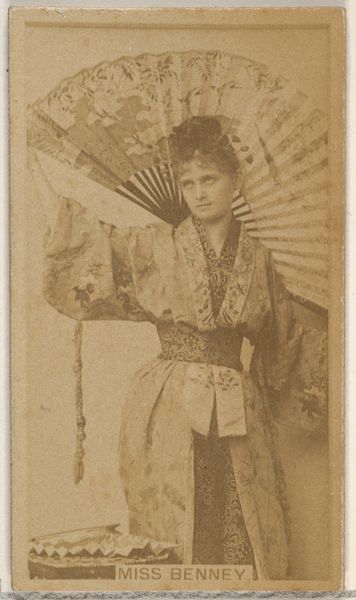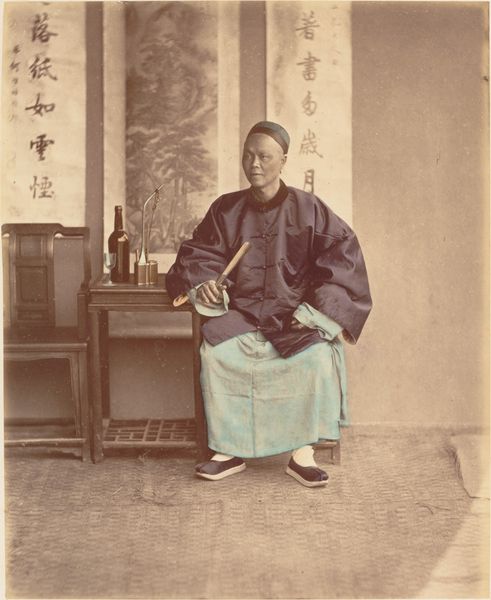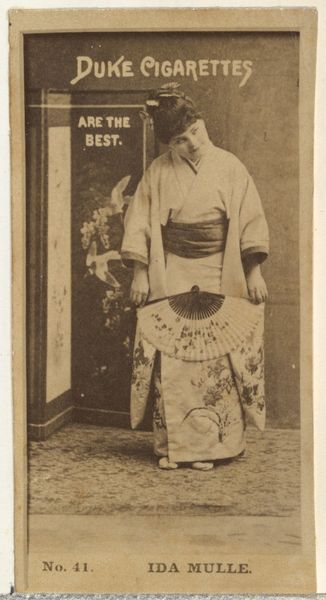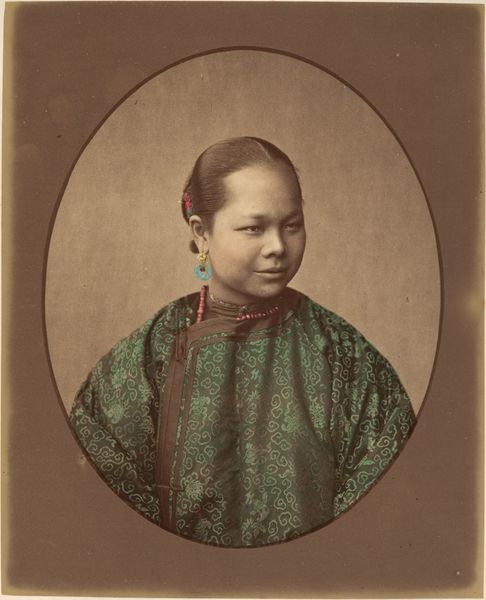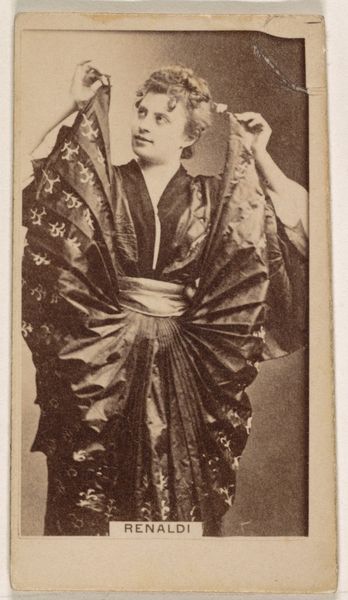
Dimensions: height 105 mm, width 72 mm, height 181 mm, width 115 mm
Copyright: Rijks Museum: Open Domain
Curator: What a striking portrait! We’re looking at an early 20th-century print, possibly a photograph reproduced as a print, titled "Portret van een onbekende Japanse vrouw," or "Portrait of an Unknown Japanese Woman." Editor: Yes, my immediate reaction is a sense of profound dignity and composure. The tones are muted, almost sepia, emphasizing the textures of her kimono and elaborate hairstyle. It projects a very poised femininity, doesn't it? Curator: Absolutely. And what I find particularly interesting is the material aspect: this photographic print process itself. Think of the labor involved—the photographer's studio, the development, the printing, even the sourcing of the paper. This wasn’t a simple snapshot. This was crafted, and for sale through T. Jingu studios, which are credited here. Editor: That's precisely where the social history kicks in. This would have been during a period of immense cultural change in Japan, Western influences starting to permeate while traditional values were still fiercely held. Was this portrait commissioned for personal reasons, or was it intended for broader circulation as a representation of Japanese womanhood, perhaps even for Western consumption? Who exactly was consuming this imagery? Curator: Good question! It could have been part of a project showing the variety of occupations or societal status. Photography at the time still demanded skill and resources. Considering the props: a luxurious armchair and her expensive-looking clothing, my guess would be this person was of higher status than your typical working-class woman. Editor: Perhaps it was meant to perpetuate idealized beauty standards during a shifting cultural landscape, masking class and perhaps even anxieties about a rapidly changing social structure. Or maybe the sitter was just proud and wanted to show a sense of independence by working and getting a photo! I see her expression, although demure, as powerful, maybe hinting resistance through serenity. Curator: Interesting. I find the detail fascinating—the printing process really allows for minute detail to remain preserved and allows one to study not only her material wealth in clothing but even her elaborate hair do, hinting at long, laboured processes. Editor: Thinking about representation in art in these years, particularly of women and Japanese women, helps nuance the way we see even the most ostensibly straightforward portrait. We have to examine our position in looking, what she chose to show us and also consider what she has no control over, who it gets to, and so forth. Curator: Well, the piece certainly stimulates many thoughts—both from a social perspective but, more than anything, I enjoy tracing the means of creation for these works. Editor: Agreed. It reminds us that a portrait is never just a face, but an artifact deeply embedded within layers of history, material production, and social meaning.
Comments
No comments
Be the first to comment and join the conversation on the ultimate creative platform.
